Opinion & Analysis
The tournament you’ve never heard of at the golf course everybody loves
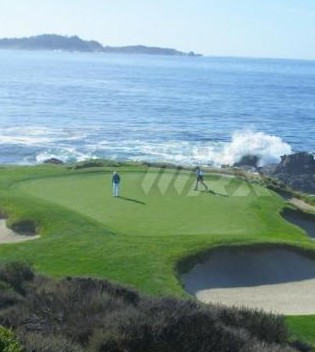
When great American golf courses – or just great golf courses in general – are the topic of conversation, one name that always comes up is Pebble Beach. Golf fans of all stripes, from the casual to the most avid, know Pebble Beach – even if they’ve never stepped foot on the property – thanks to years of television coverage of the old “Crosby Clambake”, the Bing Crosby National Pro-Am, which is now the AT&T National Pebble Beach Pro-Am. Between the Crosby, and the five U.S. Opens that have been held there since 1972, the dramatic land- and seascapes of Pebble Beach are familiar territory to millions worldwide.
With fame and acclaim come complications, however – crowds on the course, shuttle buses from miles-distant parking venues, ropes and course marshals funneling the throngs of spectators into specific traffic areas. While it’s still a thrill to be physically present at Pebble Beach when the PGA Tour pros (and in the case of the AT&T, their celebrity amateur partners) are teeing it up, it’s still a filtered, micro-managed experience.
Wouldn’t we all like to roam this great golf course unhindered, walking the fairways (if we choose), picking our viewing spots and seeing the course the way the players do? Of course we would, even without our clubs (and the $495 green fee…). Well, for 41 years that opportunity has existed, in the form of the best-kept secret in golf – the Pebble Beach Invitational.
Click here for more discussion in the “Tour Talk” forum.
See Pebble Beach like you have never seen it before
Sponsored for the past fifteen years by Callaway, the Pebble Beach Invitational started in 1972 as the Laguna Seca–Del Monte Hyatt Pro-Am, growing and changing over the ensuing years with sponsors such Lynx Golf, Spalding, Ben Hogan and Merrill Lynch.
The Pebble Beach Invitational is like a cross between the AT&T Pro-Am and an industry golf outing writ large. Though it is played over four days on a three-course rota, with the final rounds played on the home course – just like the AT&T – the Pebble Beach Invitational differs in a couple of significant ways. The amateur players aren’t stars from the worlds of sports, music, television and movies, with a few industry and business people thrown in; they are mostly business people and dedicated amateur golfers with the ready cash and the free time to take a week off in November and come to the Monterey Peninsula to play golf. The most important difference, though, and the aspect of the tournament that sets it apart, is the mix of professional players that take part.
The Pebble Beach Invitational is the only tournament that pits professional golfers from the PGA Tour, the Web.com Tour, the Champions Tour and the LPGA– with a leavening of PGA professionals and mini-tour players – against each other under a length-adjusted handicap system. Graduated tees level the playing field –black for the PGA Tour players, blue for the Champions Tour players, gold for the LPGA pros, white for the amateur men and red for the amateur women – allowing each hole to be played with similar shots by the male and female competitors; on par-4s and par-5s you’ll see the ladies walking past their male competitors’ ball positions in the fairway and pulling the same or nearly the same, club for their second shots as the men are playing from further back.
For spectators, the Pebble Beach Invitational offers a low-key, simplified version of the better-known, bigger-name tournaments. While there are no celebrity amateurs and few really well known pros playing, the Pebble Beach Invitational allows spectators a more intimate viewing experience and plenty of high-quality golf. Forget about 20 minute shuttle bus rides from the CSU-Monterey Bay campus – for the Pebble Beach Invitational, free spectator parking is located at Collins Field, the polo field right next door to the Peter Hay Par-3 golf course, a 5-minute walk from the Pebble Beach Lodge. Admission to the tournament is free, and the usual $9.75 fee to the 17-Mile Drive is waived for the four days of the tournament.
Convenient free parking and free admission aside, the biggest draw for the Pebble Beach Invitational is the unfettered viewing experience the tournament offers – few course marshals and those mostly just there to direct traffic at road crossings within the course, and no gallery ropes (for the most part – the edges of the greens are roped off). In a radical departure from the big tournaments like the U. S. Open and the AT&T, spectators are free to walk either side of the fairways, not just one, and even to walk on the fairways behind the competitors.
No matter how many times you have watched television coverage of the AT&T or a U. S. Open at Pebble, or even if you have attended one of those tournaments, being able to walk the fairways at Pebble Beach gives you a much greater appreciation for the complexity and the genius of this iconic golf course.
Walking the fairway on No. 6, for example, you will gain a much better appreciation for the difficulty of the blind second shot and for the precipitous slope, which looms over the player in the fairway.
At the 8th hole you can sight over the “aiming rock” that sits in the middle of the fairway to allow players to line up their tee shot. Continue walking over the crest of the rise, and you stand at the end of the main fairway and see the 170-yard shot to the green which players are faced with here – an approach that Jack Nicklaus has called “the greatest second shot in golf”.
Walking the fairways on Nos. 9 and 10 you’ll look over the edge of the cliffs that drop down to the beach lining Carmel Bay and get a truer sense of the severity of the slope of the fairways – and wonder how anyone ever keeps a drive in play here.
More revelations await the fairway-walking spectator at the Pebble Beach Invitational as the back nine unfolds: the tricky second shot at the uphill, left-to-right par-4 11th hole, where the green slants away uphill and to the right with only a narrow opening on the left front; the challenge of the last shot into the green at the 14th hole, the uphill par-5 with the most severely sloped green on the course – or maybe anywhere; and finally, the ultimate view at Pebble Beach – the sweeping curve of the 18th hole, with Carmel Bay on the left.
Click here for more discussion in the “Tour Talk” forum.
Well-known, and not-so-well-known players mix in the field at the Pebble Beach Invitational
The field in this year’s Callaway Pebble Beach Invitational featured an eclectic mix of players from the PGA Tour, the LPGA Tour, Champions Tour, Web.com Tour and others. The field included such notables as 2008 Masters Champion Trevor Immelman; two-time Pebble Beach Invitational winner Tommy Armour III; 2004 U.S. Ryder Cup team member Fred Funk; local gal Juli Inkster, a native of Santa Cruz, Calif., and a 7-time LPGA major winner and member of the World Golf Hall of Fame. There were also relatively well-known players such as Colt Knost, 2007 U.S. Amateur and Amateur Public Links champion; Anna Rawson, a willowy blonde from Australia who splits her time between the LPGA Tour and international modeling assignments; and Cheyenne Woods, a Wake Forest graduate and two-time All-American who plays on the LPGA’s Symetra Tour – and just happens to have a famous golfer-uncle with the same last name.
Arguably the biggest name in the field was Annika Sörenstam, the retired former World No. 1 who left the professional game at the height of her career to settle down in and start a family. This was Sörenstam’s third appearance at the Pebble Beach Invitational, having played in the 1999 and 2010 editions. In 1999, she came down the final fairway with a chance to win, but lost by a shot to Rocco Mediate.
Sörenstam got her tournament off to a good start the first two days with a 70 and a 69, at Del Monte and Pebble Beach, respectively, but blew up to a 9-over 81 in wet, windy conditions at Spyglass Hill on Saturday. She redeemed herself with a 3-under 69 under sunny skies at Pebble Beach on Sunday, but the damage had been done.
“I just played bad [at Spyglass], Sorenstam said. “I already hit it shorter, I’m about 20 percent shorter than I was, and you can just add the wind on it – I mean it went nowhere for me. It’s just rust and not playing.”
Annika played her final round on Sunday in a group that included Bay Area resident Juli Inkster. Inkster, a Santa Cruz native and graduate of San José State University, holds the distinction of being the only women to have won the Pebble Beach Invitational, which she did in 1990.
Click here for more discussion in the “Tour Talk” forum.
Big Break grad Tommy “Two Gloves” Gainey makes it two out of three with a win at Pebble Beach
Coming out on top in this year’s edition of the Pebble Beach Invitational was PGA Tour player Tommy “Two Gloves” Gainey, a one-time factory worker from South Carolina who has just completed his second full season on the PGA Tour. Gainey first came to the attention of the golf world in two appearances on the Golf Channel reality show The Big Break, which he won in his second appearance, Big Break VII, a reunion show that brought back players from the previous six seasons.
Gainey came to Pebble Beach in good form; just four weeks prior to this event he notched up his first win on the PGA Tour when he took the victory at the McGladrey Classic, in Sea Island, Ga. He laid claim to that first PGA Tour win in no uncertain fashion, coming from 7 strokes behind 54-hole co-leaders Jim Furyk and Davis Love III to win by one stroke over David Toms with a final round 60.
Gainey’s somewhat eccentric style of play – he wears two “all-weather” gloves and grips the club baseball-style – held up under the range of conditions the competitors faced over the four days of the tournament. He carded scores of 69-69-70 through sunny but breezy conditions Thursday at Del Monte, light rain Friday at Spyglass Hill, and blustery and rainy conditions Saturday at Pebble Beach – the most exposed of the three courses in the tournament rota. He added another 69 in Sunday’s final round for a 277 total and a one-stroke victory.
Playing in the final round James Hahn, of Alameda, Calif., Billy Horschel, 54-hole leader Robert Streb, a Web.com player from Chickasha, Okla, Gainey had his closest competition in view down the final stretch.
After persevering to post a 2-under 70 at Pebble in the previous day’s poor conditions, Sunday’s brilliant sunshine and calm winds were just what the doctor ordered for Gainey, as he opened his round with a 3-under front side to make up the two-stroke lead Robert Streb had held after 54 holes. Streb, who just earned his 2013 PGA Tour card with a No. 7 finish on the 2012 Web.com Money List, saw the wheels wobble and then spin off on the back nine, starting with a double-bogey on No. 10 that dropped him to two shots behind Gainey. Horschel and Hahn, the other members of the final group, completed their final rounds in even par and 1-over, respectively, and never figured in the chase to the finish.
Just ahead of Gainey’s final foursome, William McGirt and 1996 Pebble Beach Invitational champion Kirk Triplett were making moves, and Gainey, keeping an eye on the scoreboards dotting the course, knew that he would have to stay on his toes to keep ahead of them.
A bogey on No. 10 dropped Two Gloves back to 10-under, one stroke up on McGirt and two on Triplett, but he put the pedal down on the straightforward par-4 13th hole for a birdie, and kept the heat on for another birdie on the par-5 fourteenth, the toughest hole on the course. After that good stretch the golf gods intervened, though, and Gainey hit a rough patch at No. 15 that injected a little doubt into the situation.
After landing his second shot in the right-front greenside bunker, Gainey overcooked his recovery, flying the green by a good 40 yards. Going after the ball with vigor because of its position, lying well down in the lush, damp rough, Gainey gouged a monster divot out of the turf – and only moved the ball about half the distance to the green. Now looking at a strong possibility of a double-bogey that would drop him out of the lead, his second attempt at getting to the putting surface was a beautiful head-high chip that landed about a yard onto the green. His ball must have decided that it had had enough, rolling sure-footedly down to the hole and slipping in for a chip-in bogey.
Another bogey at No. 16, less dramatic, but just as damaging, was the result of an untimely 3-putt, slipping Gainey back to 10-under. McGirt and Triplett had moved up to 10-under by this point, though Tommy wouldn’t know it until he got to the 18th tee and saw the next scoreboard. After a sand-save par out of the front bunker at the par-3 seventeenth, Gainey checked the scoreboard near the 18th tee box. Seeing that McGirt and Triplett were both in at 10-under, he knew that he had to birdie No. 18 to win.
Playing well under pressure is what success in competitive golf is all about, even when the “W” is only bringing home a $60,000 paycheck (1/12th of Tommy’s payday last month for winning the McGladrey Classic, and just a little less than what the five guys who were T-15 at the McGladrey each took home) – Gainey had a job ahead of him. Pebble’s 18th, the iconic oceanfront par-5 that is the course’s signature hole, is a beautiful, left-sweeping swath of green bordering the blue waters of Carmel Bay, but when a player comes to the tee box needing a birdie to win, it’s 548 yards of sheer terror bordered by the biggest lateral hazard on the planet.
Two Gloves, baseball grip, herky-jerky swing and all, Gainey laced a 295-yard drive to a prime position on the right side of the fairway, in front of the pair of trees guarding the spot, setting up an ideal angle for the approach shot – about 230 yards across the corner of the fairway. Taking 3-wood from the spot in the fairway that generations of golfers have striven to reach off the tee at 18, Gainey watched in dismay as his second shot hooked left, toward the long fairway bunker and the seawall that lies between the 18th fairway and the waters of Carmel Bay. Asked after the round about his thoughts as he watched his approach shot to the 18th green heading left, Gainey said, “When I saw my ball headed towards that bunker, I was just hoping it’d get in and stay there.”
Luckily for Gainey, his ball did get in the bunker and stay, and the self-described “pretty good bunker player” was looking at a testing up and down for the win. A deftly-played bunker shot across the opening of the green saw him safely on the putting surface, but with a knee-knocking 6-foot putt standing between him and victory. Stroking the ball firmly – still with both gloves on, as always – he rolled in the winning putt, raising a fist in victory as the ball dropped into the cup.
A few minutes after the winning putt had dropped, at the trophy ceremony beside the 18th green, honorary tournament host Johnny Miller – who has three AT&T Pro-Am titles to his credit and knows a thing or two about winning at Pebble Beach – acknowledged Gainey’s clutch finish, asking the assembled crowd to day:
“That was a pretty awesome birdie there on the last hole, don’t you think you guys? There’s something about winning at Pebble Beach; I don’t care if it’s the Hershey Bar Open, there’s just something about winning at Pebble.”
Miller cited Gainey’s recent success, reminding the fans around the 18th green that Gainey had now won two of the last three events he had entered.
“You gotta be feeling pretty good, huh? ” he said to Gainey.
“I’m feeling pretty happy right now,” Gainey said. “Winning here is just awesome. How could you ask for anything better – winning at Pebble Beach.”
Click here for more discussion in the “Tour Talk” forum.
Click here for more discussion in the “Tour Talk” forum.
Written by: Gary McCormick
GolfWRX Contributor
- LIKE1
- LEGIT0
- WOW0
- LOL0
- IDHT0
- FLOP0
- OB0
- SHANK0
Opinion & Analysis
The Wedge Guy: What really makes a wedge work? Part 1

Of all the clubs in our bags, wedges are almost always the simplest in construction and, therefore, the easiest to analyze what might make one work differently from another if you know what to look for.
Wedges are a lot less mysterious than drivers, of course, as the major brands are working with a lot of “pixie dust” inside these modern marvels. That’s carrying over more to irons now, with so many new models featuring internal multi-material technologies, and almost all of them having a “badge” or insert in the back to allow more complex graphics while hiding the actual distribution of mass.
But when it comes to wedges, most on the market today are still single pieces of molded steel, either cast or forged into that shape. So, if you look closely at where the mass is distributed, it’s pretty clear how that wedge is going to perform.
To start, because of their wider soles, the majority of the mass of almost any wedge is along the bottom third of the clubhead. So, the best wedge shots are always those hit between the 2nd and 5th grooves so that more mass is directly behind that impact. Elite tour professionals practice incessantly to learn to do that consistently, wearing out a spot about the size of a penny right there. If impact moves higher than that, the face is dramatically thinner, so smash factor is compromised significantly, which reduces the overall distance the ball will fly.
Every one of us, tour players included, knows that maddening shot that we feel a bit high on the face and it doesn’t go anywhere, it’s not your fault.
If your wedges show a wear pattern the size of a silver dollar, and centered above the 3rd or 4th groove, you are not getting anywhere near the same performance from shot to shot. Robot testing proves impact even two to three grooves higher in the face can cause distance loss of up to 35 to 55 feet with modern ‘tour design’ wedges.
In addition, as impact moves above the center of mass, the golf club principle of gear effect causes the ball to fly higher with less spin. Think of modern drivers for a minute. The “holy grail” of driving is high launch and low spin, and the driver engineers are pulling out all stops to get the mass as low in the clubhead as possible to optimize this combination.
Where is all the mass in your wedges? Low. So, disregarding the higher lofts, wedges “want” to launch the ball high with low spin – exactly the opposite of what good wedge play requires penetrating ball flight with high spin.
While almost all major brand wedges have begun putting a tiny bit more thickness in the top portion of the clubhead, conventional and modern ‘tour design’ wedges perform pretty much like they always have. Elite players learn to hit those crisp, spinny penetrating wedge shots by spending lots of practice time learning to consistently make contact low in the face.
So, what about grooves and face texture?
Grooves on any club can only do so much, and no one has any material advantage here. The USGA tightly defines what we manufacturers can do with grooves and face texture, and modern manufacturing techniques allow all of us to push those limits ever closer. And we all do. End of story.
Then there’s the topic of bounce and grinds, the most complex and confusing part of the wedge formula. Many top brands offer a complex array of sole configurations, all of them admittedly specialized to a particular kind of lie or turf conditions, and/or a particular divot pattern.
But if you don’t play the same turf all the time, and make the same size divot on every swing, how would you ever figure this out?
The only way is to take any wedge you are considering and play it a few rounds, hitting all the shots you face and observing the results. There’s simply no other way.
So, hopefully this will inspire a lively conversation in our comments section, and I’ll chime in to answer any questions you might have.
And next week, I’ll dive into the rest of the wedge formula. Yes, shafts, grips and specifications are essential, too.
- LIKE14
- LEGIT4
- WOW1
- LOL1
- IDHT2
- FLOP2
- OB1
- SHANK1
Golf's Perfect Imperfections
Golf’s Perfect Imperfections: Amazing Session with Performance Coach Savannah Meyer-Clement

In this week’s episode, we spent some time with performance coach Savannah Meyer-Clement who provides many useful insights that you’ll be able to implement on the golf course.
- LIKE0
- LEGIT0
- WOW0
- LOL0
- IDHT0
- FLOP0
- OB0
- SHANK0
19th Hole
Vincenzi’s 2024 RBC Heritage betting preview: Patrick Cantlay ready to get back inside winner’s circle

Just a two-hour drive from Augusta National, the PGA TOUR heads to Harbour Town Golf Links in Hilton Head Island, S.C. Hilton Head Island is a golfer’s paradise and Harbour Town is one of the most beautiful and scenic courses on the PGA TOUR.
Harbour Town Golf Links is a par-71 that measures 7,121 yards and features Bermuda grass greens. A Pete Dye design, the course is heavily tree lined and features small greens and many dog legs, protecting it from “bomb-and-gauge” type golfers.
The field is loaded this week with 69 golfers with no cut. Last year was quite possibly the best field in RBC Heritage history and the event this week is yet another designated event, meaning there is a $20 million prize pool.
Most of the big names on the PGA Tour will be in attendance this week with the exceptions of Hideki Matsuyama and Viktor Hovland. Additionally, Webb Simpson, Shane Lowry, Gary Woodland and Kevin Kisner have been granted sponsors exemptions.
Past Winners at Harbour Town
- 2023: Matt Fitzpatrick (-17)
- 2022: Jordan Spieth (-13)
- 2021: Stewart Cink (-19)
- 2020: Webb Simpson (-22)
- 2019: CT Pan (-12)
- 2018: Sotoshi Kodaira (-12)
- 2017: Wesley Bryan (-13)
- 2016: Branden Grace (-9)
- 2015: Jim Furyk (-18)
In this article and going forward, I’ll be using the Rabbit Hole by Betsperts Golf data engine to develop my custom model. If you want to build your own model or check out all of the detailed stats, you can sign up using promo code: MATTVIN for 25% off any subscription package (yearly is best value).
Key Stats For Harbour Town
Let’s take a look at key metrics for Harbour Town Golf Links to determine which golfers boast top marks in each category over their past 24 rounds.
Strokes Gained: Approach
Strokes Gained: Approach is exceedingly important this week. The greens at Harbour Town are about half the size of PGA TOUR average and feature the second-smallest greens on the tour. Typical of a Pete Dye design, golfers will pay the price for missed greens.
Total SG: Approach Over Past 24 Rounds
- Scottie Scheffler (+1.27)
- Tom Hoge (+1.27)
- Corey Conners (+1.16)
- Austin Eckroat (+0.95)
- Cameron Young (+0.93)
Good Drive %
The fairways at Harbour Town are tree lined and feature many dog legs. Bombers tend to struggle at the course because it forces layups and doesn’t allow long drivers to overpower it. Accuracy is far more important than power.
Good Drive % Over Past 24 Rounds
- Brice Garnett (88.8%)
- Shane Lowry (+87.2%)
- Akshay Bhatia (+86.0%)
- Si Woo Kim (+85.8%)
- Sepp Straka (+85.1%)
Strokes Gained: Total at Pete Dye Designs
Pete Dye specialists tend to play very well at Harbour Town. Si Woo Kim, Matt Kuchar, Jim Furyk and Webb Simpson are all Pete Dye specialists who have had great success here. It is likely we see some more specialists near the top of the leaderboard this week.
SG: TOT Pete Dye per round over past 36 rounds:
- Xander Schauffele (+2.27)
- Scottie Scheffler (+2.24)
- Ludvig Aberg (+2.11)
- Brian Harman (+1.89)
- Sungjae Im (+1.58)
4. Strokes Gained: Short Game (Bermuda)
Strokes Gained: Short Game factors in both around the green and putting. With many green-side bunkers and tricky green complexes, both statistics will be important. Past winners — such as Jim Furyk, Wes Bryan and Webb Simpson — highlight how crucial the short game skill set is around Harbour Town.
SG: SG Over Past 24 Rounds
- Jordan Spieth (+1.11)
- Taylor Moore (+1.02)
- Wyndham Clark (+0.98)
- Mackenzie Hughes (+0.86)
- Andrew Putnam (+0.83)
5. Greens in Regulation %
The recipe for success at Harbour Town Golf Links is hitting fairways and greens. Missing either will prove to be consequential — golfers must be in total control of the ball to win.
Greens in Regulation % over past 24 rounds:
- Brice Garnett (+75.0%)
- Scottie Scheffler (+69.9%)
- Corey Conners (+69.0%)
- Shane Lowry (+68.3%)
- Patrick Rodgers (+67.6%)
6. Course History
Harbour Town is a course where players who have strong past results at the course always tend to pop up.
Course History over past 24 rounds:
- Patrick Cantlay (+2.34)
- Cam Davis (+2.05)
- J.T. Poston (+1.69)
- Justin Rose (+1.68)
- Tommy Fleetwood (+1.59)
The RBC Heritage Model Rankings
Below, I’ve compiled overall model rankings using a combination of the five key statistical categories previously discussed — SG: Approach (24%), Good Drives (20%), SG: SG (14%), SG: Pete Dye (14%), GIR (14%), and Course History (14%)
- Shane Lowry
- Russell Henley
- Scottie Scheffler
- Xander Schauffele
- Corey Conners
- Wyndham Clark
- Christiaan Bezuidenhout
- Matt Fitzpatrick
- Cameron Young
- Ludvig Aberg
2024 RBC Heritage Picks
Patrick Cantlay +2000 (FanDuel)
With the exception of Scottie Scheffler, the PGA Tour has yet to have any of their star players show peak form during the 2024 season. Last week, Patrick Cantlay, who I believe is a top-5 players on the PGA Tour, took one step closer to regaining the form that’s helped him win eight events on Tour since 2017.
Cantlay limped into the Masters in poor form, but figured it out at Augusta National, finishing in a tie for 20th and ranking 17th for the week in Strokes Gained: Ball Striking. The former FedEx Cup champion will now head to one of his favorite golf courses in Harbour Town, where he’s had immaculate results over the years. In his six trips to the course, he’s only finished worse than 7th one time. The other finishes include three third places (2017, 2019, 2023) and one runner-up finish (2022). In his past 36 rounds at Harbour Town, Cantlay ranks 1st in Strokes Gained: Total per round at the course by a wide margin (+2.36).
Cantlay is winless since the 2022 BMW Championship, which is far too long for a player of his caliber. With signs pointing to the 32-year-old returning to form, a “signature event” at Harbour Town is just what he needs to get back on the winning track.
Tommy Fleetwood +3000 (FanDuel)
I truly believe Tommy Fleetwood will figure out a way to win on American soil in 2024. It’s certainly been a bugaboo for him throughout his career, but he is simply too talented to go another season without winning a PGA Tour event.
At last week’s Masters Tournament, Fleetwood made a Sunday charge and ended up finishing T3 in the event, which was his best ever finish at The Masters. For the week, the Englishman ranked 8th in the field in Strokes Gained: Approach, 10th in Strokes Gained: Ball Striking and 16th in Strokes Gained: Putting.
Harbour Town is a perfect layout for Fleetwood, and he’s had relative success at this Pete Dye design in the past. In his four trips to the course, he’s finished inside of the top 25 three times, with his best finish, T10, coming in 2022. The course is pretty short and can’t be overpowered, which gives an advantage to more accurate players such as Fleetwood. Tommy ranks 8th in the field in Good Drive % and should be able to plot his way along this golf course.
The win is coming for Tommy lad. I believe there’s a chance this treasure of a golf course may be the perfect one for him to finally break through on Tour.
Cameron Young +3300 (FanDuel)
Cameron Young had a solid Masters Tournament last week, which is exactly what I’m looking for in players who I anticipate playing well this week at the RBC Heritage. He finished in a tie for 9th, but never felt the pressure of contending in the event. For the week, Young ranked 6th in Strokes Gained: Off the Tee and 6th in Strokes Gained: Ball Striking.
Despite being one of the longest players off the tee on the PGA Tour, Young has actually played some really good golf on shorter tracks. He finished T3 at Harbour Town in 2023 and ranks 20th in the field in Good Drive% and 16th in Greens in Regulation in his past 24 rounds. He also has strong finishes at other shorter courses that can take driver out of a players hand such as Copperhead and PGA National.
Young is simply one of the best players on the PGA Tour in 2024, and I strongly believe has what it takes to win a PGA Tour event in the very near future.
Corey Conners +5500 (FanDuel)
Corey Conners has had a disappointing year thus far on the PGA Tour, but absolutely loves Harbour Town.
At last week’s Masters Tournament, the Canadian finished T30 but ranked 20th in the field in Strokes Gained: Approach. In his past 24 rounds, Conners ranks 3rd in the field in Strokes Gained: Approach, 3rd in Greens in Regulation % and 24th in Good Drive %.
In Conners’ last four trips to Harbour Town, his worst finish was T31, last season. He finished T4 in 2021, T12 in 2022 and ranks 8th in Strokes Gained: Total at the course over his past 36 rounds.
Conners hasn’t been contending, but his recent finishes have been encouraging as he has finished in the top-25 in each of his past three starts prior to The Masters, including an impressive T13 at The PLAYERS. His recent improvement in ball striking as well as his suitability for Harbour Town makes Conners a high upside bet this week.
Shane Lowry (+7500) (FanDuel)
When these odds were posted after Lowry was announced in the field, I have to admit I was pretty stunned. Despite not offering much win equity on the PGA Tour over the last handful of years, Shane Lowry is still a top caliber player who has the ability to rise to the top of a signature event.
Lowry struggled to score at The Masters last week, but he actually hit the ball really well. The Irishman ranked 1st for Strokes Gained: Approach on the week and 7th in Strokes Gained: Ball Striking. As usual, it was the putter that let him down, as he ranked 60th in the field in Strokes Gained: Putting.
Harbour Town is most definitely one of Lowry’s favorite courses on the PGA Tour. In his six starts there, he’s finished in the top 10 three times, including third twice. Lowry is sensational at Pete Dye designs and ranks 7th in Strokes Gained: Total in his past 36 rounds on Dye tracks.
Lowry is perfect for Harbour Town. In his past 24 rounds, he ranks 5th in Strokes Gained: Approach, 2nd in Good Drive% and 5th in Green in Regulation %. If he figures it out on the greens, Shane could have his first win in America since 2015.
Lucas Glover +12000 (FanDuel)
This is one of my weekly “bet the number” plays as I strongly believe the odds are just too long for a player of Glover’s caliber. The odds have been too long on Glover for a few weeks now, but this is the first event that I can get behind the veteran being able to actually contend at.
Glover is quietly playing good golf and returning to the form he had after the understandable regression after his two massive victories at the end of 2023. He finished T20 at The Masters, which was his best ever finish at Augusta National. For the week, Lucas ranked 18th for Strokes Gained: Approach and 20th in Strokes Gained: Ball Striking.
Over his past 24 rounds, Glover ranks 9th in Strokes Gained: Approach and 13th in Good Drive %. Harbour Town is a short course that the 44-year-old will be able to keep up with the top players on Tour off the tee. He’s played the course more than 20 times, with mixed results. His best finishes at Harbour Town include a T7 in 2008, but recently has a finish of T21 in 2020.
Glover has proven he can contend with the stars of the Tour on any given week, and this number is flat out disrespectful.
- LIKE30
- LEGIT5
- WOW2
- LOL1
- IDHT1
- FLOP2
- OB0
- SHANK2
-

 19th Hole1 week ago
19th Hole1 week agoDave Portnoy places monstrous outright bet for the 2024 Masters
-

 19th Hole3 weeks ago
19th Hole3 weeks agoThings got heated at the Houston Open between Tony Finau and Alejandro Tosti. Here’s why
-

 19th Hole1 week ago
19th Hole1 week agoTiger Woods arrives at 2024 Masters equipped with a putter that may surprise you
-

 19th Hole2 weeks ago
19th Hole2 weeks agoReport: Tiger Woods has ‘eliminated sex’ in preparation for the 2024 Masters
-

 19th Hole4 days ago
19th Hole4 days agoTwo star names reportedly blanked Jon Rahm all week at the Masters
-

 19th Hole4 days ago
19th Hole4 days agoNeal Shipley presser ends in awkward fashion after reporter claims Tiger handed him note on 8th fairway
-

 19th Hole3 days ago
19th Hole3 days agoReport: LIV Golf identifies latest star name they hope to sign to breakaway tour
-

 19th Hole2 weeks ago
19th Hole2 weeks agoAddiction, spinal fusion, and scam artists – Everything Anthony Kim revealed in candid interview with David Feherty

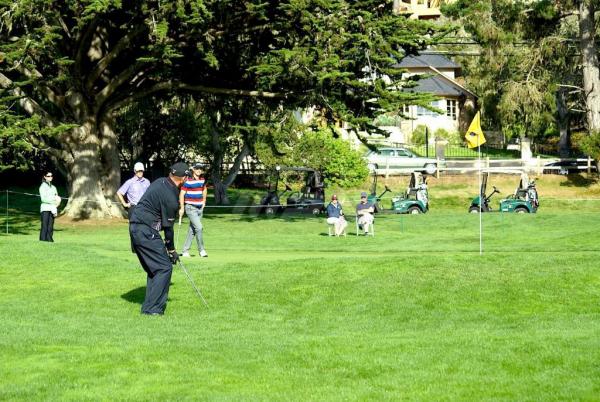
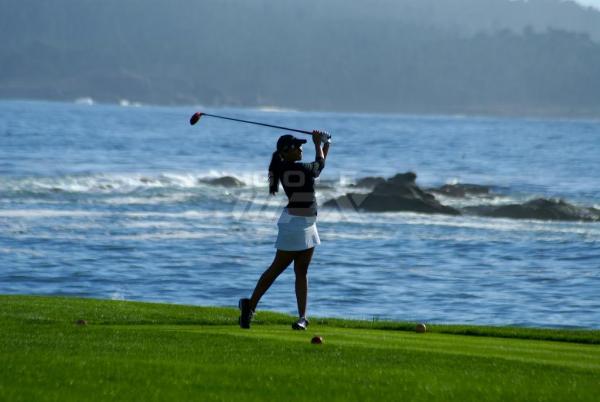
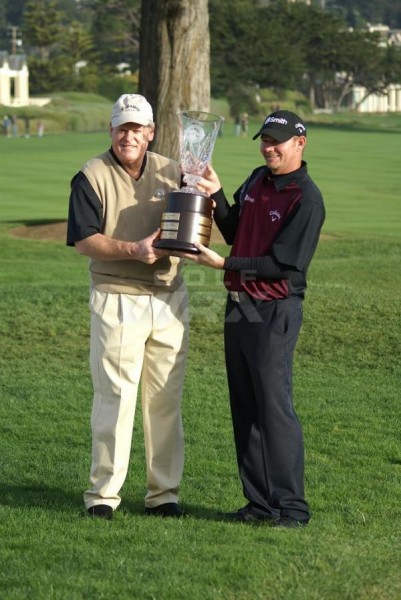
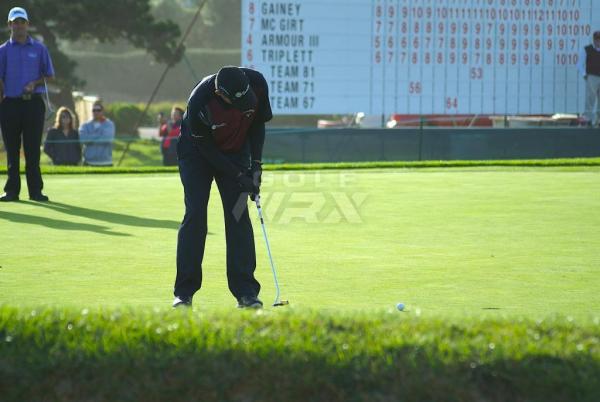
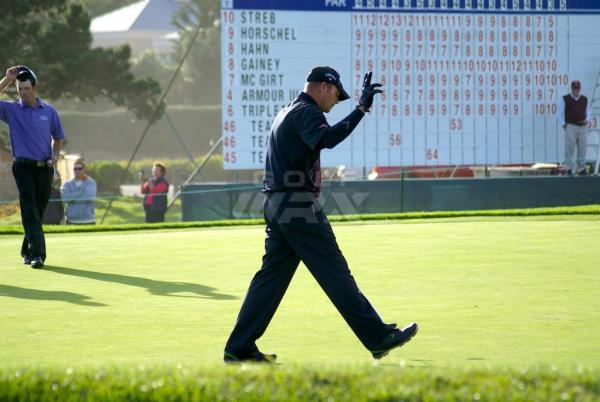















kalsch
Jan 14, 2014 at 10:32 am
I do not agree, look at:
http://golfshortseveryday.blogspot.com/2013/09/pebble-beach-performance-golf-shorts.html Friendly, Kalyn